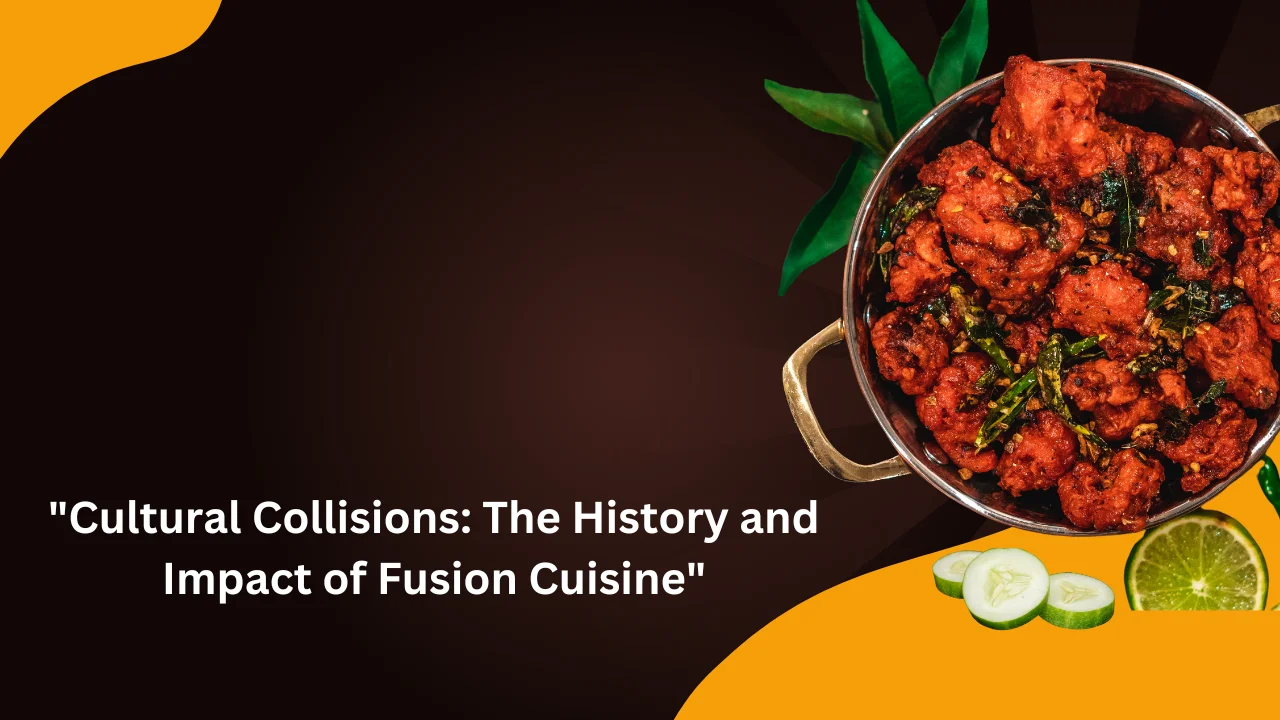In an increasingly interconnected world, the fusion of culinary traditions from different cultures has become a vibrant and dynamic facet of global cuisine. Fusion cuisine represents the creative blending of ingredients, techniques, and flavors from diverse culinary backgrounds to create innovative and exciting dishes. This article explores the history of fusion cuisine, its cultural collisions, and its profound impact on the way we experience food today.
The Origins of Fusion Cuisine
The concept of fusion cuisine is not entirely new. Historically, food has always been a reflection of cultural exchanges. The Silk Road, for instance, was not only a trade route for silk and spices but also a conduit for culinary influences. Spices from India, noodles from China, and preserved foods from the Middle East all mingled along this ancient route, laying the groundwork for early forms of fusion cuisine.
In Europe, the influence of colonialism and exploration brought together ingredients and cooking techniques from across the globe. For example, the introduction of chili peppers from the Americas transformed European and Asian cuisines. Similarly, the use of tropical fruits in European dishes and the incorporation of African ingredients in Caribbean cooking exemplify the early stages of culinary fusion.
The Modern Fusion Movement
The modern era of fusion cuisine began to take shape in the late 20th century, particularly in the 1980s and 1990s. This period saw a significant shift as chefs began to experiment with blending disparate culinary traditions to create new and exciting dishes. One of the most influential figures in this movement was Wolfgang Puck, who popularized fusion cuisine with his innovative California cuisine. Puck’s use of Asian ingredients in traditional French dishes, such as his famous Thai-style pizza, helped define the fusion cuisine genre.
Another notable pioneer was Roy Yamaguchi, whose “Hawaii Regional Cuisine” merged the rich culinary traditions of Hawaii with Japanese, French, and Pacific Island influences. This approach highlighted the diverse cultural heritage of Hawaii and showcased how regional ingredients could be combined in unexpected ways.
Cultural Collisions and Culinary Creativity
Fusion cuisine embodies the concept of cultural collisions—where diverse culinary traditions intersect to create something entirely new. These collisions can result in both remarkable and controversial outcomes. On one hand, fusion cuisine celebrates the richness of cultural diversity, fostering greater understanding and appreciation of different culinary traditions. On the other hand, it sometimes faces criticism for cultural appropriation or for diluting traditional dishes.
Culinary creativity thrives in the realm of fusion cuisine. It encourages chefs to experiment with bold flavor combinations, innovative techniques, and unconventional presentations. For example, the combination of Japanese sushi with Mexican ingredients has led to the creation of sushi burritos, a fusion dish that merges the freshness of sushi with the heartiness of a burrito. Similarly, Korean BBQ tacos blend the smoky, savory flavors of Korean barbecue with the convenience of Mexican street food.
The Impact of Fusion Cuisine
Fusion cuisine has had a profound impact on the global culinary landscape. It has democratized fine dining by making diverse and sophisticated flavors more accessible to a broader audience. Fusion restaurants have become popular destinations, offering diners a chance to experience a wide range of culinary traditions in a single meal.
Moreover, fusion cuisine has played a role in promoting cultural exchange and understanding. By blending ingredients and techniques from different cultures, fusion dishes highlight the commonalities between diverse culinary traditions while celebrating their unique contributions. This has led to greater appreciation for global cuisines and has encouraged more adventurous eating.
Fusion cuisine has also influenced culinary education and innovation. Culinary schools and chefs are increasingly incorporating fusion techniques into their training, emphasizing the importance of creativity and adaptability in the kitchen. This has led to a new generation of chefs who are skilled in blending different culinary traditions and pushing the boundaries of traditional cooking.
Challenges and Considerations
While fusion cuisine offers many benefits, it also presents challenges. One concern is the potential for cultural appropriation, where elements of a particular culture’s cuisine are used without proper acknowledgment or respect. Chefs and diners alike must be mindful of the origins of ingredients and techniques, ensuring that fusion dishes are created with sensitivity and awareness.
Another challenge is the balance between innovation and authenticity. Fusion cuisine often walks a fine line between creating something new and maintaining the integrity of traditional dishes. Striking the right balance requires a deep understanding of both the ingredients being used and the cultural contexts from which they originate.
Conclusion
Fusion cuisine represents a fascinating intersection of cultures, flavors, and culinary traditions. Its history reflects centuries of cultural exchange and experimentation, while its modern incarnation continues to push the boundaries of traditional cooking. By celebrating the creative blending of diverse culinary influences, fusion cuisine not only enriches our dining experiences but also fosters greater appreciation and understanding of global cultures. As we continue to explore and enjoy fusion dishes, it’s important to approach this culinary adventure with respect, creativity, and an open mind.
